[ This blog series is about artists and curators who chose to work in Miami, and those who’ve been based here that decided to leave. For more info, read the introduction here. ]
“’I came here for a month, and that was eight years ago’ is what I hear from a lot of people I meet. I came here for three months, and that was eight months ago. There’s a vortex.” Sculptor and mixed media artist Brookhart Jonquil sits on the edge of his bed in a rented upstairs room at General Practice, an alternative exhibit space run by local artist Carlos Rigau at the western edge of Miami’s Design District. He knows the Vortex is drawing him in, deeper and deeper, and he chooses not to resist.
The Higgs boson is supposed to be important; if its true existence withstands further testing, we shall see. But the Miami Vortex is real. It is a known irresistible pull of assuaging, satiating elements such as warm ocean, clean sunshine, Latin food, unpretentious smiles, all served up on a foundation of affordable living. It adds a lubricating current to personal velocity, and creates an experience of pace apart from the world outside its field. Artists and art professionals are especially drawn into the Vortex by its fundamental force of “Yes,” thought to arise from a statistical concentration of optimistic art people converging in a small area, connecting by mutual desire. The “Yes” force is bi-directional (“Want to be in a group show?”–> “Yes” … “Can I be in your group show?”–> “Yes.”).
But enough science; back to Broookhart.
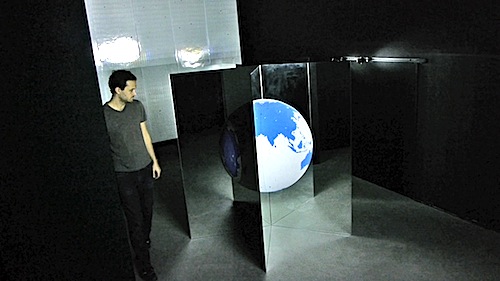
Inadvertent networking takes some of the credit for Brookhart's Project Room installation "Inverted Night," which opened in April of this year at the de la Cruz Collection Contemporary Art Space.
“I never really considered myself any good at networking,” he realizes, “it just sort of happens on its own here. Everybody goes to everything. You run into people, and they become your friends, and then you’re in a show with them, and hey, I guess I networked. In New York you couldn’t possibly go to everything but here you end up being friends with all the other artists, it’s your professional life as well as your social life.”
Newcomers bring positivism with them, and the Yes force amplifies it. With each passing day the career value of every step is less calculated, the easy support and encouragement smooths rough spots, and the path to just doing things is clearer.
It’s not even been a year and Brookhart has enjoyed dovetailing shows, including a solo project room installation at the prominent de la Cruz Collection. “Someplace like New York you have to bust to make money, on top of a practice. Here, it’s easier to get by, to have more time in the studio,” he explains during a break at his Fountainhead studio space in the Little River area.
Modestly, he continues, “Success in art is probably at least 80 percent luck,” which is the kind of thing people say when they make their own luck. He credits a LegalArt residency with getting him visibility, resulting in shows by visiting curators Omar Lopez Chahoud and Trong Nguyen, and the hard work of Dorsch Gallery, whose founder Brook Dorsch saw Brookhart’s MFA show in Chicago, included him in a group show, and brought him into the gallery’s array of artists. “Miami was not on my radar before I met Brook Dorsch,” says Brookhart, who came to Miami for his group show opening last year, and the Vortex got him.
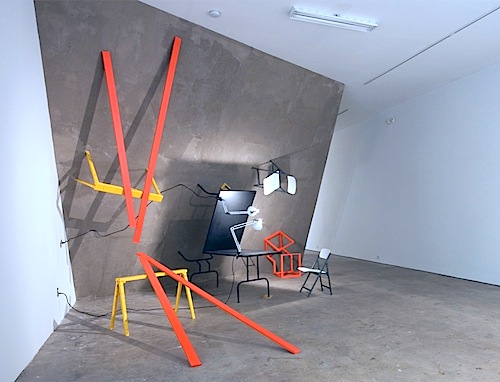
Brookhart's installation "Never Odd or Even" at Dorsch Gallery, which opened in April 2011. Image courtesy of Dorsch Gallery.
After his first Miami home at the LegalArt building on an emerging edge of downtown, Brookhart moved into a treehouse above an urban farm in Little Haiti, and now he’s at General Practice, which “is going to be a trip as much as the treehouse was. I’m doing all the extremes Miami has to offer.”
At his studio he’s working on several ideas at once (including something with beachballs, perhaps a Miami influence), to be ready and open to the next opportunity, likely to present itself before his current show closes. “I don’t have any projected goals for being here, it seems to work best if you just let Miami happen,” he says. Then, in Brookhart’s voice, the Vortex says, “It’s pretty easy to make things happen here.”
Conceptual artist Hannes Bend dove into the Vortex all the way from Germany.

Artist Hannes Bend in his 3-channel video and found object installation "Reef" at his solo show "Eclipse," which opened at Charest-Weinberg Gallery in March of this year.
With a focus on domestication of natural areas and the creation of mini-ecosystems within urban areas for entertainment, Hannes created work interpolating places in Berlin, like a million-liter aquarium in a hotel complex and a tropical-themed swimming pool with very public privacy. Naturally, he set his sights on South Florida, and came here for a residency at Fountainhead before deciding to relocate and base himself in Miami.
Berlin “has so many different art scenes and communities,” says Hannes. Since arriving here he’s been struck by the relaxed unanimity of spirit in what behaves like a single, multifaceted art community, not a factionalized scene. “I met Berlin artists here at residencies who I never met in Berlin because they were in a totally different art community there. Here people are way more interconnected and supportive, even outside the art community.”
The benefit of community support outside the arts was instrumental in Eclipse, his first major solo exhibition in Miami held at Charest-Weinberg. The complete installation of video over a landscape of ocean-dredged tires from a horribly failed 1970s reef experiment was enabled only through enthusiastic volunteerism. “Diving companies and boat companies volunteered to help, which would have cost a 5-digit amount of money we didn’t have.” The work garnered a critical mass of attention from international and local press, an important achievement. Apart from the free weeklies and monthlies, mainstream Miami area press is missing most of the unfolding historical growth of Miami’s year-round working art community, unless an art moment dons camouflage and crosses over into a proper subject category. But enough complaining; back to Hannes.
Sitting on a pile of salty tires, the artist ponders differences between his native and adopted homes. In Berlin, “it’s more metropolitan, an art community that’s self-reflective. And here a lot of artists’ practice is more engaging with the community. Relational aesthetics here is a big topic.” And then there’s the math. In Berlin or New York, “with thousands and thousands of artists it’s a little like sardines in a box. You have the problem of visibility, to sustain yourself.” But the opportunity to produce large-scale and involved projects and get them exhibited is more attainable in Miami. “I’m sure I wouldn’t have been able to do this kind of project in New York, it would have been a project for a more established artist, to do something in a space this size in New York.”
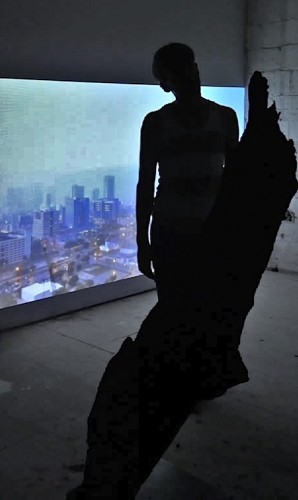
Hannes created the installation/performance "Essence," which included dancers romancing a section of a 3,500-year old tree burned down by a drug addict in central Florida, for the one-night show "Situation Range" curated by Southernmost Situations at LegalArt on May 25. Video image courtesy of the artist.
“I never thought I’d be able to do things like this in Miami. I thought the art world here would be driven towards the art market.” Miami galleries and institutions do worry about economics along with the rest of the world, but Hannes praises their open-minded inclination to show work that can’t be sold, just experienced. Another paradigm of the Vortex/Yes phenomenon, vibrating through all echelons of Miami art purview.
Curator Amanda Sanfilippo rides the Vortex like a freestyle wakeborder.
Amanda completed her MA at the Sotheby’s Institute of Art London in 2011. She has done stints in New York with Creative Time and the Whitney Museum, and with the curatorial team at the BCA Center in Burlington, Vermont. She’s guest lectured in Switzerland. On November 1st of last year she drove to Miami from New York and today she sits at a desk in Miami’s venerable, not-for-profit Locust Projects exhibition space, with the title of Development Associate. Why did she do that?
It began with an interest in the role of institutional commissions in generating new work, and the decision to write her dissertation on contemporary variations of the Kunsthalle model. Her studies considered Situations and Artangel in the UK, and, through its support from the Andy Warhol Foundation, she discovered Locust Projects in Miami, founded by three local artists in 1998. She visited Locust while seeing family in the Miami area, and made it a case study for her dissertation. This did not go unnoticed by the organization, and Locust’s Executive Director Chana Budgazad Sheldon offered Amanda a job.
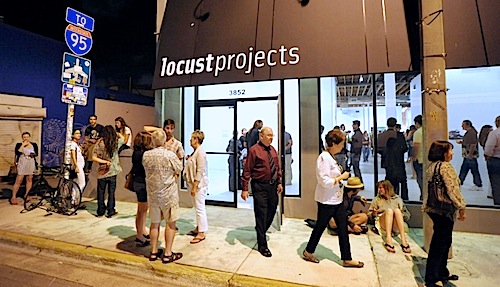
Amanda's new job is at Locust Projects, a non-profit alternative art exhibition space. Image courtesy of Locust Projects.
“Working as a professional in Miami has been fundamentally different than in the Northeast,” says Amanda, recounting previous experience with pro forma methodologies and a practical, big picture approach at large institutions. “I’ve never worked for a small not-for-profit. Here there’s an immediacy that’s very present, all the time. It’s a small-institution thing.” In Miami she finds “it’s much more about getting projects done in a way that makes sense, as opposed to being ‘you show up at this time and end at this time, turn off the lights and turn on the lights.’ This is much more a process-based work experience than I’ve ever had, a more intuitive way of working. It’s not about choosing an answer, it’s about engaging a process, a much more open-ended process to arrive at what the thing is.”
She considers that conclusion and adds, “I think it has something to do with Miami.”
The apparent relaxed pace of Miami doesn’t by definition compromise deadlines; in fact it allows an extra level of attention to the substance of a project as it goes through your hands. At best, the Miami pace trains you to savor what you’re doing, and a project can deepen, not just lengthen.
When Amanda’s not at her desk at Locust, she’s running weekly aesthetics and values symposia at places like LegalArt, and writing for Miami Rail. Her ambition is well-suited for the Vortex. “The skills I have– critical analysis, knowledge about contemporary artists and art institutions, curatorial studies, knowing how to project-manage complicated productions, I never felt those skills were so valued in London and New York–where it’s nice because everyone’s speaking that sophisticated language, but you’re waiting in line all the time to do things.”
In Miami, Amanda’s moves into the art scene were friction-free, no chipping-away strategy needed to reach the art community’s most active members. She engages people and proposes things, and people say “yes.” Miami is a good long-term location for her art career. “It’s a city with a good philanthropic culture. A collecting culture that’s very curious–it has moments where it’s young and wants to learn.” As young as Miami is, she sees it as mature enough for a serious career. “Given that my interests in the last six years have been contemporary art, it’s not like I landed somewhere completely unrelated.”
Amanda, Hannes and Brookhart all found the Vortex of Miami… or did the Vortex find them?

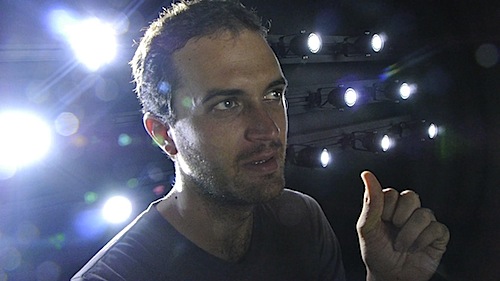
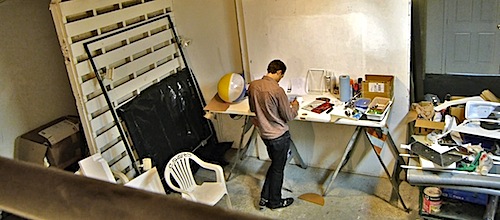
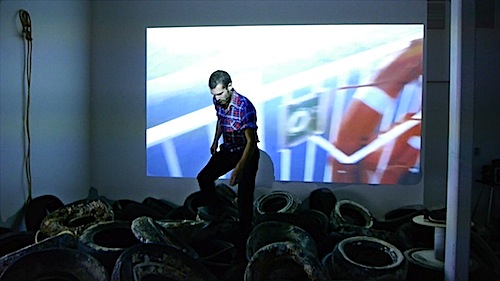


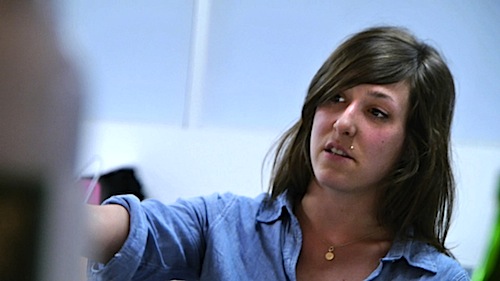



Pingback: Hannes Bend ECLIPSE | Charest-Weinberg